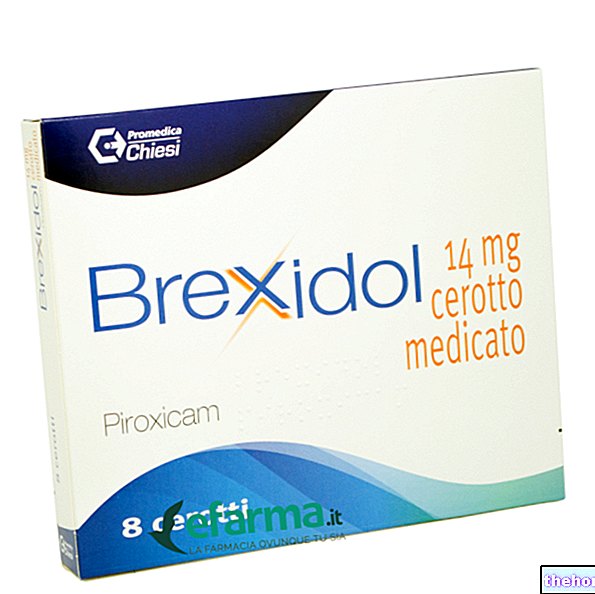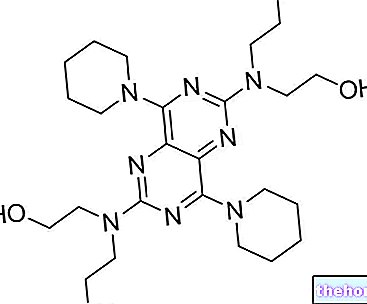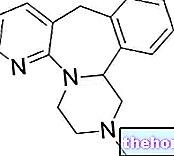Generality
When we talk about calcium channel blockers (or calcium channel blockers, if you prefer) we refer to the "set of active ingredients capable of inhibiting the voltage-gated calcium ion channels of type L (also called VOCs). -L, or slow calcium channels), located in the smooth muscle of arterial vessels and myocardium.

The VOC-L (long lasting) channels open very slowly in case of cell membrane depolarization and should not be confused with the rapid calcium channels present in the pre-synaptic terminations.
Therapeutic indications
The calcium antagonist drugs - thanks to their ability to interact with the calcium channels present on the myocardium and on the vascular smooth muscle - are used in the treatment of disorders and pathologies of the cardiovascular system, such as angina pectoris, hypertension and arrhythmias cardiac.
Classification
Usually, calcium channel blockers are divided according to their chemical structure as follows:
- 1,4-dihydropyridines (or 1,4-DHP), such as, for example, nicardipine and nifedipine.
- Phenylalkylamines (or PAA), the group to which verapamil belongs;
- Benzothiazepine (or BTZ), among which we find the diltiazem.
1,4-dihydropyridines are fat-soluble molecules which, as such, are able to cross the blood-brain barrier, so they can be used to reduce blood pressure in the brain. However, these calcium channel blockers prefer the calcium channels located in the arterial smooth muscle, so they mainly exert a vasodilatory action and are particularly indicated in the treatment of arterial hypertension.
Phenylalkylamines and benzothiazepines, on the other hand, preferentially act on the calcium channels located in the heart, thus reducing the activity of the heart. For this reason, this type of calcium channel blockers is particularly indicated in the treatment of angina pectoris and cardiac arrhythmias.
Mechanism of action
As mentioned, calcium channel blockers exert their action on the cardiovascular system by inhibiting the activity of L-type voltage-gated calcium channels.
In fact, these channels are involved both in the contraction of the myocardium and in the processes of arteriolar vasoconstriction.
Therefore, through the inhibition of these channels, the contraction of the vascular smooth muscle is blocked, with a consequent decrease in arterial pressure, and a decrease in cardiac work. More in detail, calcium channel blockers perform their action by slowing down the blood pressure. phase of repolarization of the muscle cell membrane.
In summary, it can be stated that thanks to the vasodilator effect and the negative inotropic effect generated by them, calcium channel blockers are able to determine, respectively, a decrease in the afterload and the workload of the heart.
Interactions with other drugs
Calcium antagonist drugs undergo a partial first pass metabolism in the liver, mainly operated by cytochrome P3A4 (or CYP3A4), which determines a reduced bioavailability.
Therefore, the concomitant administration of calcium channel blockers and other CYP3A4 inhibitory substances and / or drugs (such as, for example, erythromycin and grapefruit juice) causes a significant increase in the plasma concentrations of the same calcium channel blockers. whose consequences can be serious.
The simultaneous administration of calcium channel blockers and CYP3A4 inducers (such as, for example, rifampicin and phenobarbital), on the other hand, causes a decrease in blood levels of calcium channel blockers, with a consequent possible decrease in the therapeutic efficacy of these same principles. active.
In any case, for more information about the drug interactions that the different types of calcium channel blockers can establish, please refer to the package leaflets of the individual medicines.
Side effects
As with all drugs, calcium channel blockers can also cause different types of side effects. Generally, the type of undesirable effects and the intensity with which they occur vary from patient to patient, depending on the type of active principle used, the route of administration chosen and the individual sensitivity towards the active principle which one intends to use.
However, some side effects are common to the entire class of calcium channel blockers. These include:
- Hypotension;
- Peripheral edema;
- Pulmonary edema;
- Redness;
- Headache;
- Dizziness;
- Confusion;
- Palpitations, tachycardia and chest pain (side effects that occur mainly with the use of 1,4-DHP);
- Bradycardia and atrioventricular block (adverse effects that usually occur following the use of calcium channel blockers such as verapamil and diltiazem);
- Fatigue;
- Weakness;
- Rashes;
- Nausea and vomit;
- Diarrhea or constipation.
To avoid the onset of side effects such as palpitations, chest pain and tachycardia, 1,4-dihydropyridines can be used in combination with β-blocking drugs.
Conversely, calcium channel blockers such as verapamil and diltiazem should not be used in combination with β-blockers, as a sum of the cardiac depressive effects exerted by both of these drug categories may be encountered.
Other articles on "Calcium Antagonist Drugs"
- AT1-antagonist or sartan drugs
- Physiology of the gastric environment and peptic ulcer




























